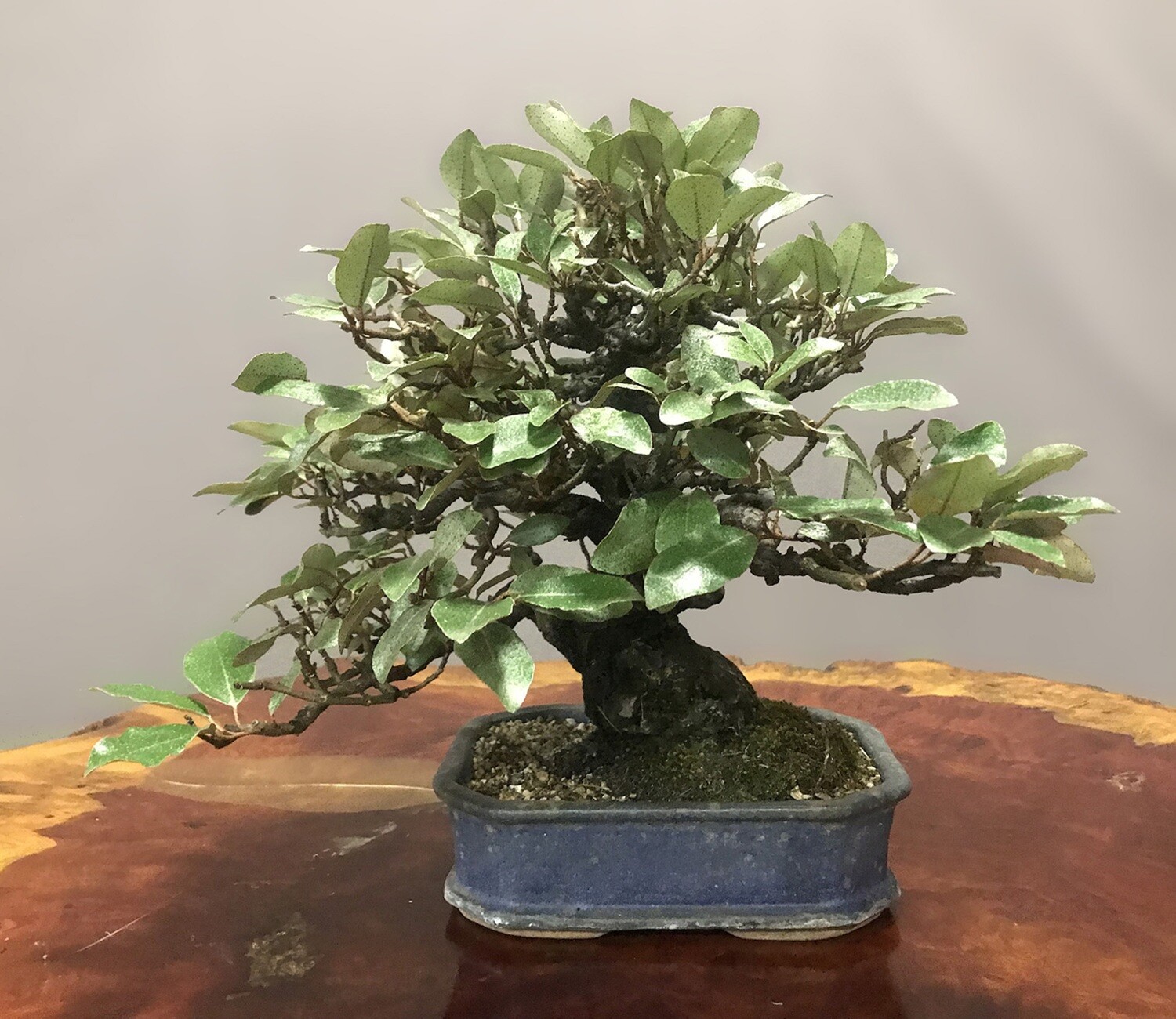Elagnus, or Silverberry, is a broadleaf, evergreen shrub, with species from Asia, Europe and North American. The most common species used in bonsai are E. multiflora (also known as gumi berry) and E. pungens. Pungens has thorns. Russian olive is also an Eleagnus and is considered an invasive pest in some areas. There is a North American native (E. commutate) that is hardy to zone 2. Eleagnus’ best feature is the dark green foliage spotted with silver flecks that give the genus its name. The flowers and berries are in bonsai scale and also sprinkled with silver. The fruit is edible.

Eleagnus is often planted as a hedge and has those good hedge characteristics that make good bonsai. It responds well to pruning, back budding prolifically, and doesn’t seem to mind aggressive root work. It can often be found in the nursery trade. New growth runs arrow straight for a long distance, so wire when still flexible, or use clip and grow techniques. The leaves are naturally 1 to 4 inches long but will reduce to 1 inch or less. Eleagnus propagates easily from cuttings. These are nitrogen fixing plants which should make them hardier than most in inorganic soils. They also tolerate coastal exposure.
As you can see above the somewhat large leaves make them a good choice for larger bonsai. Since they are used in hedges, it’s possible larger examples may be found in urban collecting opportunities. Surprisingly, with some work the leaves can be reduced sufficiently to create credible shohin. Overall these are great looking plants that seem to be under represented in the bonsai world.

